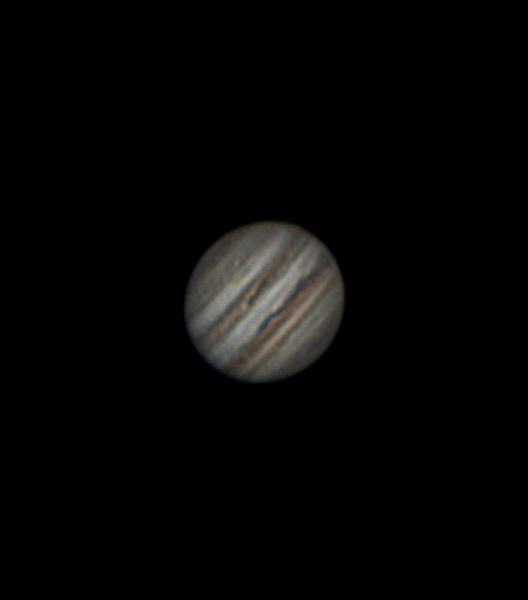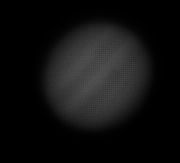
Jupiter timelapse over a period of 4 hours. The big red storm (also called “Red Eye”) can easily be seen rotating alongs its surface. This thunderstorm seems small in the animation, however, its actually big enough to fit the whole earth inside.
Every single frame in the animation is actually the result of 10'000 subsequent frames, which were merged together in order to get a much sharper image in a process called “lucky imaging”. The turbulence and density differences in the earth’s atmosphere cause jupiter to “wobble”. Only the best few percent of the 10'000 frames per subframe are kept and stacked together, in order to only pick out the sharpest frames of the video.
This can be seen in this short video which shows the “raw” unedited data:

